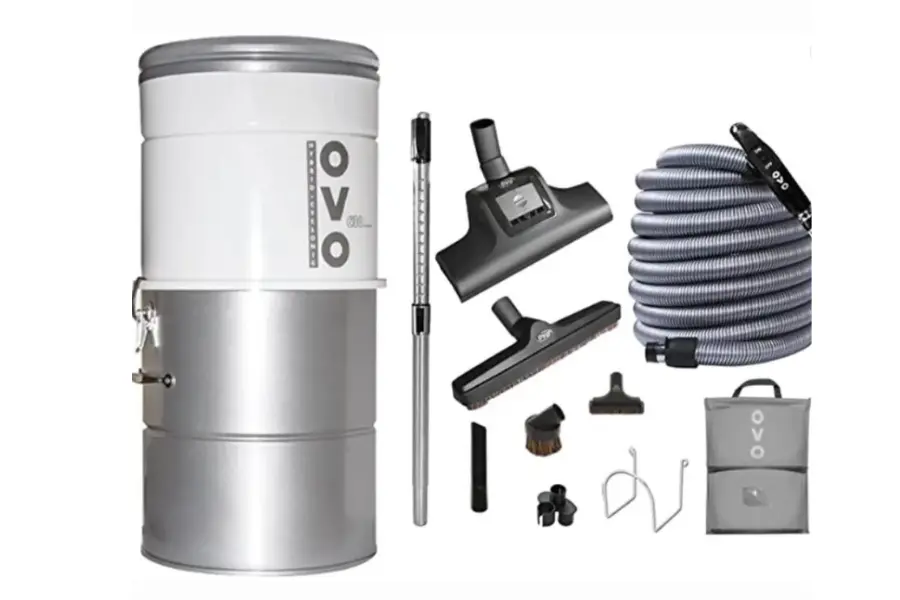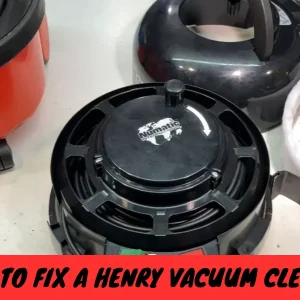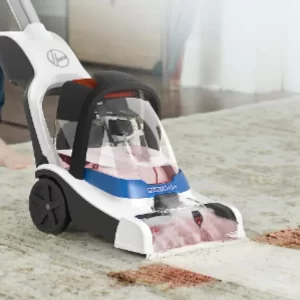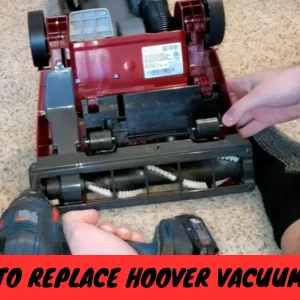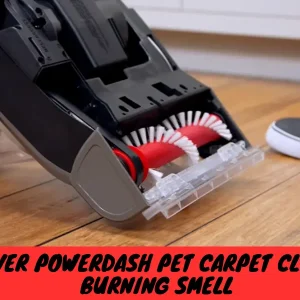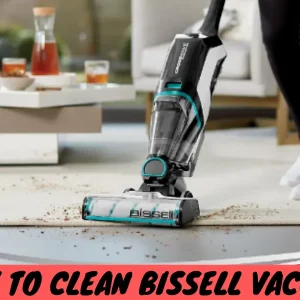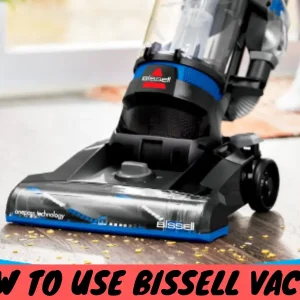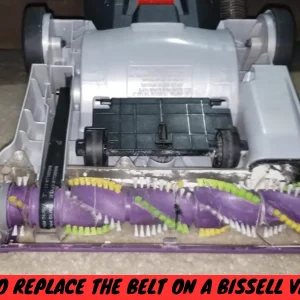“Learn how to choose a central vacuum system that suits your home’s needs. Our comprehensive guide covers essential factors and provides expert insights.“
If you want to choose a central vacuum system for your home, you need to consider the following factors: home size and design, suction power and efficiency, noise level, attachments and accessories, maintenance requirements and filtration system. For more in-depth details on these product aspects and more, keep reading.
Welcome to our comprehensive guide on how to choose a central Vacuum system for your home. Are you tired of carrying lots of vacuums and dealing with dust and noise? Upgrade to a central vacuum system immediately! Choosing the right central vacuum system for your home can make a significant difference by simplifying your cleaning routines and improving indoor air quality. In this guide, we’ll walk you through the process of How to Choose a Central Vacuum System to make your home cleaner, healthier, and more convenient.
Table of Contents
- Relevant Article
- Advantages of Central Vacuum Systems
- Key Factors of How to choose a central vacuum system
- Types of Central Vacuum Systems
- What is a central vacuum system in a house
- What is the cost of a central vacuum system
- How to Choose the Correct Central Vacuum
- Choosing the Right Central Vacuum System
- What is the average cost of a central vacuum system
- Choosing Between a Vacuum Cleaner and a Central Vacuum System
- How to Select the Best Central Vacuum System for Your Home
- How to select the right central vacuum system
Relevant Article
- How to Fix Central Vacuum System
- How to install a central vacuum system
- How to maintain a central vacuum system
- How to remove a central vacuum system in your home
Advantages of Central Vacuum Systems
When comparing central vacuum systems to regular vacuums, you can enjoy many advantages. These systems provide greater suction power, improve indoor air quality and reduce noise levels. Furthermore, they reduce the circulation of dust and allergens in the air and eliminate the need for regular dustbin emptying. So, let’s learn how to choose a central vacuum system for your home.
Key Factors of How to choose a central vacuum system
Assess Your Home’s Size and Layout
When choosing a central vacuum system, start by assessing the size and layout of your home. If you have a large home, you may need a more powerful system to thoroughly clean all rooms. Consider your home’s floor plan, total square footage, and number of floors. This initial evaluation will help you determine the appropriate power and capacity for your central vacuum system.
Air Watts and Power
The power of a central vacuum system is usually measured in air watts. You can calculate the air watts of a central vacuum by multiplying the water lift in cubic feet per minute (CFM) by the airflow in inches and then dividing the result by 8.5. Here is the source:
air watts = (airflow x water lift) / 8.5, To determine the air watts, simply divide the product of airflow and water lift by 8.5.
The ability to draw liquid through a central vacuum system is called water lift, while the ability to draw air is called airflow. Additionally, the amperage of the vacuum cleaner can also affect the overall power of the system. Vacuum power increases with higher amperage ratings. Note that in larger homes, the air wattage on the upper level may be lower than the power output on the main floor. This is due to the distance between the inlet receptacle and the central vacuum motor, which affects the power of the vacuum.
Collection and Filtration System
Central vacuum systems offer several choices for collection and filtration, such as bagged, bagless, vertical, cyclonic and inverted models.
Bagged System
Bagging systems use disposable vacuum bags to collect dust, dirt, hair and other household debris. When the bag is full, it is essential to replace it to avoid the risk of motor overheating and failure, as well as to maintain vacuum power and air wattage.
Bagless Systems
Bagless systems collect the same dirt and debris as bagged systems but instead of using a disposable bag, they direct the dirt and debris into a collection chamber. Regular emptying of the collection chamber is still necessary to prevent problems that may occur when using a full vacuum bag.
Vertical central vacuum system
Vertical systems typically use vacuum bags. These bags contain dust, dirt, hair and other debris for disposal after the airflow and debris are directed into an upright collection system.
Cyclonic central vacuum system
Cyclonic systems use centrifugal force to help separate clumps of dirt, hair and other debris as they enter the collection tank. These systems usually do not require bags; Instead, they suck dirt into a canister for disposal.
Inverted central vacuum system
Inverted systems are similar to vertical systems, except that air is drawn upward and not across the vacuum filter. When the system is turned off, dust, dirt and other debris fall off the filter and into the collection tank below, using gravity to help maintain a clean filter.
Noise Level
An attractive quality of the central vacuum system is its minimal noise generation. This is mainly because motors and collection tanks are often located in basements, garages or closets, which helps reduce noise. However, the constant buzzing of the motor can become annoying if one is near the central collection tank while the vacuum is on.
If the purpose of the collection tank is near a home office or a bedroom in the basement, it is recommended to search for a central vacuum system equipped with noise-blocking filters and large collection tanks. These features will help dampen and reduce the noise produced by the vacuum.
Attachment and Accessories
Like conventional vacuums, central vacuum systems can come with a range of additional attachments designed to make tasks like cleaning upholstery, reaching high areas and vacuuming liquids easier. Some examples of these add-ons include crevice nozzles, elbow wands, wet nozzles, brush nozzles, hose extensions, and powered vacuum heads.
- Crevice nozzle: Crevice nozzles which are long and thin extensions, are intended to collect debris from crevices and tight spaces around the home.
- Elbow wand: Elbow sticks are used by smaller individuals to reach from the floor to the top of ceiling draperies and to vacuum cobwebs from ceiling corners.
- Wet nozzle: Wet nozzles are equipped with squeegee ends to aid fluid suction and collection. The squeegee draws in water, which is then vacuumed into the vacuum system by the nozzle.
- Brush nozzle: Brush nozzles, also known as upholstery brushes, are designed to clean upholstery, including curtains and certain types of furniture. These tools are very convenient for vacuuming the interior of the car.
- Hose extension: Hose extensions can come in either rigid or flexible form and are only intended to offer users a bit of extra length at the end of the hose.
- Powered vacuum heads: Users equipped with powered vacuum heads can clean carpets as if they were using a regular vacuum instead of a central vacuum system. These attachments consist of an upright, hollow suction tube and a motorized vacuum head. The tube can easily be connected to the central vacuum line as needed.
Installation Process
DIY Installation
Some central vacuum systems offer DIY installation kits. Although this method requires some technical understanding and skills, it is also a cost-effective option.
Professional Installation
For those who want a hassle-free experience, professional installation guarantees the correct location and optimal performance of the central vacuum system.
Warranty and Support
Choose central vacuum systems from leading manufacturers that offer comprehensive warranties and reliable customer service. A strong warranty gives you confidence and quick support can help you with any technical issues or concerns.
Budget Considerations
It is very important to set a budget in advance, as the price of central vacuum systems can vary. While it may be tempting to choose the least expensive option, remember that price often reflects performance. Aim for the best possible balance between your budget and the features you need.
Energy Efficiency
In today’s era of environmental awareness, energy efficiency holds significance. Look for energy-efficient central vacuum systems to help reduce energy costs while ensuring a cleaner home.
User Reviews and Recommendations
Before making a definite decision, use online resources Go through customer reviews and get advice from friends or family members who have experience with central vacuum systems. Real-life experience can provide valuable insight and guidance.
In this article I will show you how to choose a central vacuum system, Hope you will benefit from it.
Types of Central Vacuum Systems
Cyclonic Systems
Cyclonic devices use centrifugal force to separate airborne particles and debris. Although suction power may be slightly reduced, they require less frequent filter replacement.
Filtered Systems
Filtered systems use filters to capture dust and allergens. Although these systems often provide high suction power, regular filter changes are still essential.
Hybrid Systems
Hybrid systems combine cyclone and filtration technology to provide the best of both worlds. They offer effective filtration and strong suction.
What is a central vacuum system in a house
A vacuum that is installed in the basement of your home is called a central vacuum system. This vacuum system has a motor and a series of pipes and hoses. It sucks debris from the home’s carpets and stores it in a canister or vacuum bag.
This vacuum system will benefit your home a lot. This vacuum can be operated with a remote control or switch. This system is very efficient at cleaning your carpets and has less negative impact on your carpets than regular vacuum cleaners. It makes less noise than regular vacuum cleaners.
If you ask me what is a central vacuum system in a house? Then I will tell you. A central vacuum system is a cleaning device installed all over a building. discovered in the garage or basement, a canister receives dust and debris sip by the force of a motor from wall vents, which are located for the homeowner’s benefit. There are lots of vacuums so you need to know how to choose a central vacuum system because it’s very important for your house.
If you have a central vacuum then you need to know how to install a central vacuum system in your home
What is the cost of a central vacuum system
Do you want to keep your house clean? A central vacuum system can be a beautiful solution for if you want to keep everything tidy and clean in your home. This eliminates the need to drag a heavy vacuum cleaner and lug it from room to room.
Instead, you simply plug the hose into a wall receptacle and you can vacuum any room in your house without moving a muscle. You’ll save storage space in your home by not keeping a bulky vacuum cleaner. Central Vacuum Systems: Eliminate the need to lug a bulky vacuum cleaner from room to room!
There is no definitive answer to this question as the cost of a central vacuum system can vary very much depending on the specific system, the size of the home, and the installation procedure. However, If you ask me what the cost of a central vacuum system is, I will tell you central vacuum systems typically cost between $500 and $2,000.
There are many vacuums you find then you choose the correct one and also you need to know How to choose a central vacuum system.
How to Choose the Correct Central Vacuum
How to Choose the Correct Central Vacuum? If we average it out, a person spends about 20 hours a week vacuuming. It’s a time-consuming, messy, and often disappointing task. But, it doesn’t have to be this way! With the right central vacuum system, you’ll be able to vacuum cleaner, faster, and more efficiently. Read on to learn about why central vacuum systems are the best choice for all your vacuuming needs.
How to choose a central vacuum system? There are many factors to consider when choosing a central vacuum system for your home. The size and layout of your home, the type of floors you have, your budget, and the level of cleaning power you need are all important factors to consider.
The first step is to decide the square footage of your home. This will help you determine the size and capacity of the central vacuum system you need. The type of floors you have in your home will also influence the type of system you need.
If you have hardwood floors, you’ll need a system with a bare floor accessory. If you have carpeted floors, you’ll need a system with a powerhead. Your budget is also an important factor to consider how to Choose the Correct Central Vacuum.
Central vacuum systems range in price from around $500 to $2000. The level of cleaning power you need will also affect your choice. If you have allergies or pets, you’ll need a system with more power.
Take your time and research how to choose a central vacuum system. There are more different options and find the system that’s right for your home. If you buy a central vacuum then you must know how to maintain a central vacuum system
Choosing the Right Central Vacuum System
Choosing the Right Central Vacuum System? In most cases you’ll find that a central vacuum system is a popular choice for larger homeowners. People who want to keep their home and business clean can install this type of vacuum system. This type of vacuum system is installed in a central location and is connected to a series of pipes that connect to various outlets around the house.
This type of vacuum system is very convenient because it is very easy to clean and it is very easy to maintain. It does not require traditional labor so a central vacuum system is very important for your home.
There are many types of vacuum so you need to choose the best vacuum system and you need to know how to choose a central vacuum system. If you have bought a central vacuum and your vacuum has a problem then you must know how to remove a central vacuum system in your home
What is the average cost of a central vacuum system
A central vacuum system is an installation that is designed to clean the home from a central location. It may be installed by a professional or come together by the homeowner. The system is run with a vacuum cleaner that is either attached to the system or can be taken around the home. Central vacuum systems are a good alternative for homes with a lot of square footage because it is a more efficient way to clean. The average cost of a central vacuum system varies depending on the contractor and the needs of the homeowner.
If you want you can read more about How to choose a central vacuum system, How to clean a shark vacuum canister in our Lab, plus everything you need to know How to empty central vacuum canister for your home. At the end of this you know How to clean a dyson canister vacuum. Also if you want you need to know How to clean electrolux ergorapido filter
What is the average cost of a central vacuum system?
The cost of a central vacuum system can vary depending on the size and features of the system. On average, the cost of a central vacuum system can range from $500 to $2,000. However, high-end systems can cost up to $4,000 or more.
Elements that can influence the cost of a central vacuum system incorporate the size of the home, the type of flooring, the filtration system, and the accessories included. It’s important to note that the initial cost of a central vacuum system can be offset by the long-term savings on cleaning costs and make better air quality.
If you want to buy a central vacuum then you need to know How to choose a central vacuum system, Because there are many types of vacuum.
Choosing Between a Vacuum Cleaner and a Central Vacuum System
How to choose a central vacuum system? Choosing Between a Vacuum Cleaner and a Central Vacuum System. There are many factors to think about when selecting a vacuum cleaner. A major factor is whether you want a vacuum cleaner that is easily carried or installed as part of a central vacuum system. Central vacuum systems are normally more expensive, but they have several advantages. They are powerful, so they can remove more dirt and dust from your home. They are also easier to maintain, as dirt and dust are collected in a central location instead of a vacuum cleaner.
When it comes to choosing between a vacuum cleaner and a central vacuum system, it really depends on your needs and preferences. If you have a small home or apartment, then a vacuum cleaner might be the better option since it is more compact and easier to store. On the other hand, if you have a larger home or multiple floors, then a central vacuum system might be a better choice since it is more powerful and can reach all areas of your home. Ultimately, it is up to you to decide which type of system is best for your needs.
How to Select the Best Central Vacuum System for Your Home
How to Select the Best Central Vacuum System for Your Home. When bearing in mind a central vacuum system for your home, there are some factors to take into account in order to choose the best system for your needs. The size of your home, the number of residents, the type of flooring, and the level of pet hair or other detritus are all important factors in selecting the right central vacuum.
For a smaller home or one with few residents, a smaller, not so powerful system may be enough. If you have a lot of hardwood floors or tile, a system with a bare floor accessory may be best. If you have pets, a system with a pet hair attachment can help to cut down on the amount of hair and debris in your home. Many central vacuum you have then you need to know How to choose a central vacuum system
No matter what your particular needs are, there is a central vacuum system that can meet up with them. By taking the time to choose the right system for your home, you can enjoy the benefits of a clean, healthy home for years to come.
How to select the right central vacuum system
Conclusion
How to choose a central vacuum system? Investing in a central vacuum system represents a significant commitment that can greatly improve the cleanliness and indoor air quality of your residence. Being well-informed about the important factors, different system types, installation options and maintenance requirements will empower you to make an informed choice and select the best central vacuum system that meets your needs.
FAQs
Central vacuum systems vent allergens and dust particles outside, preventing them from recirculating indoors.
Some systems offer DIY installation kits, but professional installation ensures proper functionality.
Hybrid systems combine the strengths of both technologies, offering strong suction and efficient filtration.
Central vacuum systems are versatile and effective on various flooring types, including carpets, hardwood, and tiles.
With proper maintenance, central vacuum systems can last up to 20 years or more.
